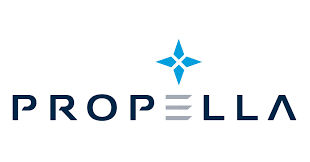预约演示
更新于:2025-05-07
Peripheral Nerve Injuries
周围神经损伤
更新于:2025-05-07
基本信息
别名 Injury of peripheral nerve、Injury of peripheral nerve (disorder)、Injury;nerve;peripheral + [20] |
简介 Injuries to the PERIPHERAL NERVES. |
关联
20
项与 周围神经损伤 相关的药物靶点 |
作用机制 p75NTR激动剂 [+1] |
最高研发阶段批准上市 |
首次获批国家/地区 中国 |
首次获批日期2006-04-11 |
靶点 |
作用机制 TRPV1激动剂 |
在研适应症 |
最高研发阶段批准上市 |
首次获批国家/地区 中国 |
首次获批日期2003-01-24 |
248
项与 周围神经损伤 相关的临床试验NCT05848778
Novel Non-invasive Therapy to Drive Robust and Sustained Peripheral Nerve Regeneration
Peripheral nerve injuries are common and often associated with poor outcomes including incomplete repair, debilitating pain states and compromised function. Although nerve regeneration can be enhanced by brief electrical nerve stimulation at the time of or before surgical repair in rodents and humans, this approach is invasive. Acute intermittent hypoxia, breathing alternate cycles of regular air and air with
50% normal oxygen levels (11% O2) is an emerging, promising non-invasive therapy promoting respiratory and non-respiratory muscle function in spinal cord injured rats and humans. Because the entire body is exposed to this therapy, it has the potential to globally impact the nervous system beyond just controlling respiratory and leg function in spinal cord injured patients. Thus, the investigators hypothesized that an acute intermittent hypoxia paradigm similar to that used for spinal cord repair will improve peripheral nerve repair in a manner akin to electrical stimulation, including its impact on expression of regeneration-associated proteins - a predictor of nerve growth states. In recent studies the investigators found this to be the case and now propose to continue these promising studies by performing a pilot clinical trial evaluating this form of treatment on patients with compromised hand function due to severe carpal tunnel syndrome. The goal is to improve nerve repair outcomes in the least invasive and optimal manner.
50% normal oxygen levels (11% O2) is an emerging, promising non-invasive therapy promoting respiratory and non-respiratory muscle function in spinal cord injured rats and humans. Because the entire body is exposed to this therapy, it has the potential to globally impact the nervous system beyond just controlling respiratory and leg function in spinal cord injured patients. Thus, the investigators hypothesized that an acute intermittent hypoxia paradigm similar to that used for spinal cord repair will improve peripheral nerve repair in a manner akin to electrical stimulation, including its impact on expression of regeneration-associated proteins - a predictor of nerve growth states. In recent studies the investigators found this to be the case and now propose to continue these promising studies by performing a pilot clinical trial evaluating this form of treatment on patients with compromised hand function due to severe carpal tunnel syndrome. The goal is to improve nerve repair outcomes in the least invasive and optimal manner.
开始日期2025-07-01 |
申办/合作机构 |
ChiCTR2500101447
A Randomized Controlled Study on the Treatment of Peripheral Nerve Injury of the Upper Limb with Mirror Therapy Based on the Closed-Loop Rehabilitation Theory
开始日期2025-06-20 |
申办/合作机构- |
NCT06925256
Considerin Peripheral Nerve Injury, Is It Safe to Perform Transradial Angiography?
So far, apart from a limited number of case reports and small-scale studies, the frequency and severity of this complication have not been objectively evaluated using electromyography (EMG). In this study, presence, severity, and extent of nerve injury (one of the potential complications following the transradial approach (TRA)) were evaluated by EMG studies in patients managed at Bursa City Hospital.
开始日期2025-05-01 |
申办/合作机构- |
100 项与 周围神经损伤 相关的临床结果
登录后查看更多信息
100 项与 周围神经损伤 相关的转化医学
登录后查看更多信息
0 项与 周围神经损伤 相关的专利(医药)
登录后查看更多信息
14,626
项与 周围神经损伤 相关的文献(医药)2025-12-31·Cell Adhesion & Migration
Influences of physical stimulations on the migration and differentiation of Schwann cells involved in peripheral nerve repair
Review
作者: Hu, Min ; Mu, Xiaodan ; Wang, Juncheng ; Gao, Qi ; Liu, Huawei ; Sun, Qingyan
2025-12-01·Child's Nervous System
Management of pediatric brachial plexus injuries: A cohort study utilizing the trauma quality improvement program (TQIP) database
Article
作者: MacIsaac, Molly F ; Li, Raissa ; Rottgers, S Alex ; Belzberg, Allan J ; Rice, Kinsey A ; Snyder, Christopher W ; Halsey, Jordan N ; Phillips, Lee G
2025-12-01·Histochemistry and Cell Biology
The amelioration effects of ankaferd blood stopper, platelet gel, and Momordica charantia on peripheral nerve injury in the rats: a stereological and ultrastructural study
Article
作者: Raimondo, Stefania ; Altun, Gamze ; Deniz, Ömür Gülsüm ; Kaplan, Suleyman ; Önger, Mehmet Emin ; Elhaj, Abubaker El ; Geuna, Stefano
152
项与 周围神经损伤 相关的新闻(医药)2025-03-14
AstraZeneca (AZ) and Ionis Pharmaceuticals’ Wainzua (eplontersen) has been approved by the European Commission (EC) to treat a subset of adults with the rare disease hereditary transthyretin-mediated amyloidosis (ATTRv).
The drug has been authorised for use in patients with stage one or two polyneuropathy, commonly referred to as hATTR-PN or ATTRv-PN. The disease affects up to 40,000 people worldwide and leads to peripheral nerve damage with motor disability within five years of diagnosis.
Transthyretin (TTR) amyloidosis occurs when misfolded TTR protein builds up in tissues, such as the heart peripheral nerves, and interferes with their normal functions. The disease progresses rapidly and can lead to cardiovascular, neurological and renal diseases such as heart failure and chronic kidney disease.
Wainzua, which can be self-administered monthly via an auto-injector, is designed to lower the production of TTR protein at its source in the liver.
The EC’S decision on the drug follows a recent recommendation from the European Medicines Agency’s human medicines committee and was supported by positive results from the phase 3 NEURO-TTRansform trial, in which patients receiving Wainzua demonstrated consistent and sustained benefits on the co-primary endpoints of serum TTR concentration and neuropathy impairment compared to an external placebo group.
Wainzua was also associated with improvements in quality of life, a key secondary endpoint, and demonstrated a favourable safety and tolerability profile throughout the trial.
Mina Makar, senior vice president, cardiovascular, renal and metabolism, AZ, said the approval “marks an important milestone for patients in the EU who can benefit from a new treatment option that provides consistent suppression of TTR production and improves neuropathy impairment and quality of life”.
AZ and Ionis are commercialising eplontersen for ATTRv-PN in the US, where it is approved under the brand name Wainua, while AZ has exclusive commercialisation and development rights in the rest of the world.
Ionis’ chief executive officer, Brett Monia, said: “With approvals in North America, [the] UK and now across the EU, we are proud of the continued progress as we and our partner, AZ, rapidly and effectively deliver Wainzua to people around the world.”
临床结果上市批准临床3期
2025-03-09
原发性干燥病(Sjögren′s disease,SjD)是一种免疫介导的慢性、炎症性疾病,临床表现极为复杂。除常见的外分泌腺功能障碍外,神经和精神系统也常受影响,严重影响患者的生活质量、社会参与度和预后。然而,在SjD患者中,其神经和精神症状常被忽视,且尚未得到全面、系统的评估。
鉴于SjD引起的神经、精神和认知障碍的病理生理学基础尚不完全清楚,且缺乏明确的诊断、调查及管理标准,当前的治疗策略主要遵循一般指导方针。因此,深入探索SjD患者神经和精神系统病变的病理机制,寻找共同的分子特征,并结合临床参数进行综合分析,对于提高诊断准确性、优化治疗方案及改善患者预后具有重要意义。
巴西风湿病学会工作小组对原发性SjD的中枢、周围和自主神经系统表现的诊断和患病率进行了系统回顾,并提出针对性的诊断和管理建议,以期为临床实践提供新的思路与参考。
研究共纳入51项研究,重点关注并分析了周围神经系统和中枢神经系统相关内容,并在此基础上制定了10条建议。
▲选择用于荟萃分析的关于SjD的神经和精神表现的诊断和流行的研究流程图(图片来源:参考文献[1])
主要观点
SjD的神经系统受累在解剖学上分为三大类:中枢神经系统、周围神经系统和自主神经系统。
尽管欧洲抗风湿病联盟干燥综合征疾病活动指数(ESSDAI)这一疾病活动评估工具纳入了部分神经系统表现,但其并未对某些神经和精神方面的表现进行评估。
神经系统症状可能比干燥症状早几年出现,这进一步增加了诊断SjD的困难性。
与干燥综合征相关的神经和精神障碍展现了一个广泛且高度异质性的临床表现谱系,其中一些症状往往未被识别为潜在疾病的一部分。
推荐意见
01
建议将ESSDAI作为诊断和评估SjD期间神经系统疾病活动的辅助工具。(同意度100%)
02
建议对患有神经系统综合征的患者进行SjD检查,即使患者没有出现干燥症状,尤其是当其他诊断线索无明显进展时。(同意度100%)
03
对于有自身免疫证据(如抗核抗体、抗Ro/SSA抗体、抗La/SSB抗体、冷球蛋白、类风湿因子)、存在生物标志物(高γ球蛋白血症、低补体水平)、有干燥症状或既往诊断为SjD的患者,建议关注神经系统疾病。(同意度100%)
04
建议对SjD和神经系统疾病患者进行管理,或与专业知识中心密切合作,采用多学科方法。(同意度100%)
周围神经系统
主要观点
周围神经系统的表现通常与体质和内脏症状以及血清生物标志物的改变有关。这些情况可能与ESSDAI评估的较高疾病活动率相关,尽管该工具没有考虑到许多潜在的表现。
周围神经系统受累比中枢神经受累更常见,其中一些可导致较差的生活质量和淋巴瘤的风险增加。
周围神经病变患者的生存率似乎降低,尤其是那些患有多发性单神经炎的患者。
SjD的神经学表现需要特别注意与感染性疾病(麻风病和丙型肝炎病毒感染、人类免疫缺陷病毒感染、人类嗜T淋巴细胞病毒感染)、代谢性疾病(糖尿病)、遗传性疾病(法布雷病、淀粉样变性)、副蛋白血症和肿瘤、维生素B12和硒缺乏、酒精或药物毒性以及其他自身免疫性炎症性疾病(乳糜泻、重症肌无力和桥本氏甲状腺炎)进行鉴别诊断。
一些与周围神经症状有关的药物包括抗生素(异烟肼、甲硝唑、乙胺丁醇、呋喃妥因、粘菌素、氨苯砜)、抗有丝分裂药物(长春新碱、顺铂、紫杉醇、阿霉素)、抗病毒药物(双脱氧肌苷、双脱氧胞苷、干扰素)以及其他药物(沙利度胺、秋水仙碱、金制剂、青霉胺、氯喹、环孢素、胺碘酮、苯妥英、双硫仑、碳酸锂片、西咪替丁)。
推荐意见
05
建议在诊断时准确评估每位患者的神经体征和症状以及随访期间的任何不适。(同意度100%)
06
建议对患有SjD和神经系统疾病的患者进行最全面的评估,首先进行完整的神经系统检查。在根据综合征和病变部位进行临床诊断后,应采用适当的辅助检查。(同意度100%)
07
由于淋巴瘤风险增加,建议对SjD和周围神经损伤患者进行血清生物标志物(细胞减少、冷球蛋白、补体C4部分、γ球蛋白血症)、涎腺肿大、淋巴结病和体质症状(发热、盗汗、体重减轻)的评估。(同意度100%)
中枢神经系统
主要观点
SjD的中枢神经系统表现多样,影像学和脑脊液分析是诊断和鉴别诊断的重要工具。
中枢神经系统受累可分为局灶性/多灶性受累(如卒中、视神经炎、多发性硬化样病变和假性肿瘤病变)和弥漫性受累(无菌性脑膜脑炎、认知功能障碍和精神障碍)。
中枢神经系统受累可能导致严重的功能丧失以及更高的发病率和死亡率。
认知障碍、抑郁症、脑病和脑膜炎是弥漫性受累的特征,这种情况更常见,但不是特别严重。血管炎、脱髓鞘疾病伴脊髓炎、视神经炎和运动神经元损伤是局灶性受累的特征,这些疾病罕见且危及生命。
SjD患者神经系统表现的主要危险因素是以前发生过另一种神经系统受累。
辅助诊断评估和管理
推荐意见
08
建议进行辅助检查以明确神经疾病的综合征和病变部位特征,避免误诊。(同意度100%)
Ⅰ. 脑脊液对于感染和中枢神经系统肿瘤的鉴别诊断至关重要。在大多数神经精神性SjD病例中,脑脊液检查结果在参考范围内。蛋白升高、淋巴细胞增多和寡克隆带均为非特异性表现,在多达1/4的中枢、颅神经或周围神经系统受累的患者中被观察到。
Ⅱ. 影像学检查,如脑部和神经轴的磁共振成像(MRI),有助于检测局灶性和弥漫性、血管性和脱髓鞘病变。在约80%的有症状或无症状个体的检查中,主要发现是白质中的血管源性病变,这些病变不具有特异性。
Ⅲ. 单光子发射计算机断层成像(SPECT)在评估受损脑区的灌注情况时具有一定价值,尽管其结果并不具有特异性,但当与磁共振成像(MRI)结合分析时,可提供有用信息。
Ⅳ. 肌电图(EMG)和神经传导研究(NCS)是诊断和验证病变部位的重要工具,特别是对于周围神经病变,应在神经系统体格检查之外进行。
Ⅴ. 神经、背神经节、肌肉和皮肤的活检和组织病理学检查分别有助于发现血管炎、神经血管坏死、炎性T细胞浸润和表皮无髓纤维密度降低。
Ⅵ. 建议所有视神经炎或脊髓炎患者进行抗水通道蛋白4抗体筛查。
09
建议对患有SjD并主诉听力损失(无论是否伴有认知障碍)的患者进行早期筛查和定期随访,通过纯音测听检查感音神经性听力损失。(同意度100%)
治疗
周围神经系统管理
周围神经病变的治疗方案应根据临床表现进行个体化调整,以缓解疼痛并优化功能。对于感觉及感觉运动轴索性神经病,治疗策略依据病情轻重及进展而异。轻度、稳定患者多采取对症处理;对于常规治疗无效或病情进展伴运动障碍的严重患者,静脉注射免疫球蛋白(IVIg)以每月2 g/kg剂量治疗有效。对于难治性病例,可考虑甲泼尼龙和环磷酰胺冲击治疗作为二线选择。利妥昔单抗及疾病修饰药物如吗替麦考酚酯和硫唑嘌呤等疗效有限。
小纤维神经病的治疗重点在于缓解疼痛,一线药物包括加巴喷丁和普瑞巴林,疼痛控制不佳时可考虑5-羟色胺-去甲肾上腺素再摄取抑制剂替代或联用。三环类抗抑郁药虽有效但可能加重干燥症状,阿片类镇痛药疗效存疑。症状治疗无效时,可尝试实验性免疫调节或免疫抑制疗法,个案报告显示IVIg有效,但治疗持续时间不明。
在治疗感觉共济失调神经病时,免疫抑制药物、IVIg、抗TNF、抗CD20疗法及糖皮质激素的使用存在争议。其中,糖皮质激素使用较广泛,IVIg常作为一线药物与其联用;免疫疗法、合成药物及血浆置换的研究结果相互矛盾,或与治疗延迟有关。多发性单神经炎常用环磷酰胺和大剂量糖皮质激素治疗。利妥昔单抗可用于冷球蛋白血症性血管炎病变。颅神经病变可用糖皮质激素治疗,根神经节病变可能对IVIg有反应。慢性炎症性脱髓鞘性多发性神经病可采用糖皮质激素、血浆置换和IVIg治疗。自主神经病变目前仅支持性治疗有效。
中枢神经系统管理
中枢神经系统表现相对罕见,其治疗多为经验性治疗。对于严重、急性或快速进展的中枢神经系统受累患者,首选大剂量糖皮质激素和环磷酰胺,随后逐渐减少糖皮质激素剂量。替代疗法和维持缓解药物包括硫唑嘌呤和霉酚酸酯等,但由于缺乏直接比较免疫抑制剂疗效和安全性的对照研究,因此无法推荐优先使用某一种药物。利妥昔单抗可用于冷球蛋白相关血管炎和NMOSD的抢救治疗。EM样病例应接受特异性EM治疗。对于精神疾病或精神模糊等惰性症状,应进行适当的监测和支持性治疗。
主要观点
对于神经系统表现的治疗多为经验性,其依据主要来自于非对照研究的小病例系列中获得的证据,并以专家意见为指导,这些意见是从治疗SjD本身的其他腺体外表现或治疗其他自身免疫性疾病的类似表现中推断出来。
免疫抑制剂主要用作糖皮质激素保留剂,很少有证据支持选择一种药物优于另一种药物。由于缺乏比较其在SjD中疗效的研究,因此除了考虑患者的特征和合并症的安全性问题外,无法给出具体的推荐。
关于剂量、给药途径和治疗持续时间,目前尚无可用的信息。
推荐意见
10
建议神经系统表现的药物管理应侧重于致病机制,而致病机制因受累类型而异。(同意度100%)
相关阅读
《柳叶刀》:皮肤干燥、剧烈瘙痒?别担心,这类单克隆抗体治疗效果好!
瘙痒、糜烂、水疱……《柳叶刀》:4大类措施,早日摆脱手部湿疹
嗜睡、疲劳、怕冷、变胖……多半是甲状腺出问题了!《柳叶刀》:关注甲减治疗的5大问题
欢迎投稿:学术成果、前沿进展、临床干货等主题均可,点此了解投稿详情。
参考资料
[1] de Oliveira FR, Appenzeller S, Pasoto SG, et al. Recommendations on neurologic, cognitive, and psychiatric manifestations in patients with Sjögren's disease by the Brazilian Society of Rheumatology. Adv Rheumatol. 2025 Feb 11;65(1):7. doi: 10.1186/s42358-025-00438-7. PMID: 39934881.
免责声明:药明康德内容团队专注介绍全球生物医药健康研究进展。本文仅作信息交流之目的,文中观点不代表药明康德立场,亦不代表药明康德支持或反对文中观点。本文也不是治疗方案推荐。如需获得治疗方案指导,请前往正规医院就诊。
分享,点赞,在看,传递医学新知
2025-03-05
AUSTIN, Texas, March 5, 2025 /PRNewswire/ -- Alafair Biosciences, Inc., a leading innovator in medical device technology, announced business results for 2024, marking a year of growth and expansion. The company's flagship product, VersaWrap® Hydrogel Sheet (VersaWrap Tendon Protector, VersaWrap Nerve Protector), drove 51% year-over-year revenue growth, demonstrating increased adoption among surgeons.
Continue Reading
VersaWrap® Hydrogel Sheet (PRNewsfoto/Alafair Biosciences, Inc.)
VersaWrap Hydrogel Sheet is a hyaluronic acid and alginate hydrogel that facilitates tissue gliding and prevents tethering, which reduces the need for reoperations and improves patient outcomes. Designed to protect injuries during healing, VersaWrap Tendon Protector is an FDA-cleared Class II medical device for use on tendons, ligaments, skeletal muscles, and VersaWrap Nerve Protector is cleared for use on peripheral nerves. Most competing products are collagen-based—derived from bovine, porcine, or human placental tissue—which remodel into additional tissue and can add bulk. VersaWrap consists of hyaluronic acid and plant-based alginate, is free from human or animal materials, and dissolves completely without replacement, making it non-bulking.
2024 Business Highlights:
51% year-over-year revenue growth from VersaWrap Hydrogel Sheet sales
Generated positive net income and EBITDA
Surpassed 24,000 implants of VersaWrap Hydrogel Sheet nationwide
Expanded distribution network by 64%
Recognized by Inc. 5000 as the 11th fastest-growing private company in Health Products
"This explosive growth is a direct reflection of VersaWrap's clinical value and the dedication of our team, partners, and customers," said John Joyoprayitno, President & CEO of Alafair Biosciences. "As we look ahead, we are committed to further expanding our reach and to helping even more surgeons achieve positive patient outcomes. With our rapidly growing distribution network and strong market momentum, Alafair is well-positioned for continued success in 2025 and beyond."
For more information about Alafair Biosciences and VersaWrap® Hydrogel Sheet, visit
About Alafair Biosciences, Inc.
Alafair is a privately held medical device company developing and marketing an innovative product portfolio based on its proprietary hydrogel technology. The mission of Alafair is to revolutionize surgical care with our versatile hydrogel technology, delivering unparalleled value to patients, surgeons, and healthcare facilities by enhancing soft tissue protection and by elevating patient outcomes. Alafair products are distributed through a dispersed network of independent distributors across the United States.
About VersaWrap® Hydrogel Sheet
VersaWrap Hydrogel Sheet (VersaWrap Tendon Protector, VersaWrap Nerve Protector) is an FDA-cleared medical device implant (not tissue) comprising hyaluronic acid (HA) and alginate that provides a gelatinous encasement. VersaWrap Tendon Protector is indicated to manage and protect injured tendons where there is no substantial loss of tendon tissue, to manage and protect surrounding tissues such as ligaments and skeletal muscles, and may encounter structures such as anchors, grafts, staples, and sutures. VersaWrap Nerve Protector is indicated to manage peripheral nerve injuries where there is no substantial loss of nerve tissue. Our innovative technology allows tissues to glide and to remain untethered, thereby reducing reoperations and improving patient outcomes.
SOURCE Alafair Biosciences, Inc.
WANT YOUR COMPANY'S NEWS FEATURED ON PRNEWSWIRE.COM?
440k+
Newsrooms &
Influencers
9k+
Digital Media
Outlets
270k+
Journalists
Opted In
GET STARTED
分析
对领域进行一次全面的分析。
登录
或

生物医药百科问答
全新生物医药AI Agent 覆盖科研全链路,让突破性发现快人一步
立即开始免费试用!
智慧芽新药情报库是智慧芽专为生命科学人士构建的基于AI的创新药情报平台,助您全方位提升您的研发与决策效率。
立即开始数据试用!
智慧芽新药库数据也通过智慧芽数据服务平台,以API或者数据包形式对外开放,助您更加充分利用智慧芽新药情报信息。
生物序列数据库
生物药研发创新
免费使用
化学结构数据库
小分子化药研发创新
免费使用



